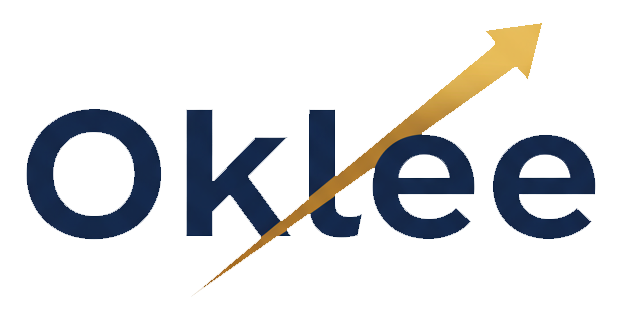Indexed Universal Life (IUL) policies are often marketed as the “best of both worlds”—a life insurance policy that also grows your money, tax-free. But what many agents don’t highlight are the hidden fees and long-term costs that can quietly eat away your cash value and future returns.
If you’re thinking about using IUL as a retirement or investment strategy, this guide will break down the actual costs, surrender charges, and key life insurance investment risks you need to know before signing anything.
What Is an IUL, Really?
An Indexed Universal Life policy is a type of permanent life insurance. It includes:
- A death benefit (like any life insurance policy)
- A cash value account tied to a market index (like the S&P 500)
- Flexibility in premium payments and death benefit amounts
The pitch? Your money can grow based on market performance—without the downside risk—while staying inside a tax-advantaged life insurance wrapper.
But here’s the catch: these policies are expensive to maintain and often underperform over time once fees are accounted for.
1. IUL Fees: The Silent Return Killer
One of the biggest issues with IULs is the fee structure. Most buyers don’t realize how many layers of charges are baked into the policy.
Common IUL Fees Include:
✅ Cost of Insurance (COI)
This is the fee for the life insurance portion of your policy. It increases as you age—and by a lot. By your 50s or 60s, it can consume a large portion of your cash value.
✅ Administrative Fees
These are monthly or annual charges to manage your account. They seem small at first—maybe $5 to $30/month—but they add up over decades.
✅ Rider Charges
Add-ons like chronic illness riders or premium waivers also carry extra fees. They aren’t free, even though they’re often promoted as “included.”
✅ Premium Load Fees
Some policies charge a percentage of your premium (often 5–10%) just for contributing money.
✅ Asset-Based Fees or Participation Caps
While you aren’t directly paying investment fees, your returns are capped, which acts like a fee. For example, if the S&P gains 15% but your cap is 9%, you lose out on the extra 6%.
Example: How Fees Shrink Your IUL Growth
Let’s say you contribute $5,000 per year to an IUL policy. Here’s how your money might be reduced:
- 7% premium load = $350 gone
- $25/month admin fee = $300/year
- COI in year 5 = $900/year
- Real credited growth = 5–6% (after participation cap)
Even if the market does well, your effective return might be 2–4%, or worse if you stop funding the policy early.
2. Surrender Charges: You Can’t Just Walk Away
Most IUL policies come with long surrender charge periods—often 10 to 15 years. That means if you cancel the policy before that time is up, you’ll pay a large penalty.
How Surrender Charges Work:
- Usually a percentage of the cash value
- Highest in the first few years (up to 10–12%)
- Decline gradually each year
- Can wipe out most of your early growth
This locks you in. And if you realize you made a mistake or simply can’t afford the premiums anymore, you’re stuck paying to exit.
Bottom line: You’re penalized for changing your mind, even if the product isn’t performing well.
3. Premium Flexibility Sounds Great—Until You Stop Paying
One of the selling points of IUL is that it’s “flexible.” You can adjust premiums, stop paying for a while, or let the policy pay itself.
But here’s the problem: if you stop funding it and your cash value can’t keep up with the rising cost of insurance, the policy starts eating itself from the inside.
Eventually, you may get a notice saying:
“Your policy is underfunded and will lapse unless you contribute $X within 30 days.”
And when it lapses, you lose the insurance and might owe taxes on the gains you never even withdrew.
4. Returns Aren’t Guaranteed (Even if It Sounds Like They Are)
Yes, IUL policies offer “protection” against market losses. But that’s because you’re not actually invested in the stock market—you’re being credited returns based on an index.
And those returns are controlled through:
- Participation Rates (you only get a portion of the gains)
- Caps (maximum return per year)
- Spreads or Fees (they subtract a fixed % before crediting)
For example:
- S&P 500 gains 12%
- Cap is 9%
- Participation rate is 80%
- Final credited return: 7.2%
Not bad, but not great either—especially after insurance and admin fees.
Also, some years, you’ll earn 0%, even if your COI and fees still apply.
5. Policy Loans Are Not Free
Another major pitch: “Tax-free retirement income via policy loans.”
While it’s true you can borrow against your IUL’s cash value tax-free, it’s not free money. There are important caveats:
- Loan interest applies (often 2–6%)
- If you don’t repay it, the loan balance grows
- If the policy lapses with a loan outstanding, you’ll owe taxes on the full gain
- Overborrowing increases risk of policy collapse
In other words, those tax-free withdrawals come with real financial risk.
6. You’re Paying for More Than You Need
For most people, term life insurance + traditional investing (ETFs, Roth IRA, etc.) is a better and cheaper combo.
With IUL, you’re bundling insurance and investing—which means you’re paying for both, often inefficiently.
Term Life:
- Cheap, simple, temporary coverage
- $30/month can buy a $500,000 policy for healthy adults
Investing Separately:
- Use Roth IRAs, index funds, or real estate
- Transparent fees and full liquidity
- No surrender charges, complex riders, or hidden terms
Unless you have a very specific estate planning goal or high-income strategy, IUL is often overkill.
Who Might Actually Benefit From IUL?
To be fair, IUL isn’t always a bad product—it’s just often sold to the wrong people.
It might make sense for:
- High earners who max out all retirement plans and want tax-deferred growth
- People with estate tax planning needs
- Long-term savers who can overfund the policy consistently for 20+ years
- Those who already understand the risks and mechanics
If you’re not in that group? You’re likely better off keeping it simple.

Final Thoughts: IUL Fees & Risks Are Too Often Ignored
Indexed Universal Life policies promise a lot—tax-free growth, downside protection, flexible premiums—but the reality is complex, expensive, and often disappointing.
If you’re considering an IUL, make sure you:
✅ Ask for a full policy illustration showing best-case and worst-case scenarios
✅ Understand every fee—especially COI and surrender charges
✅ Know what happens if you stop paying or withdraw too much
✅ Have already maxed out your IRA, 401(k), or other tax-advantaged accounts
Don’t rely on an agent’s pitch. Get a second opinion from a fee-only financial advisor before locking into something that could cost you more than it earns.
Want more honest breakdowns of life insurance investments and financial tools?
Subscribe to the newsletter at oklee.online for no-fluff reviews, investing insights, and smart financial strategies each week.



